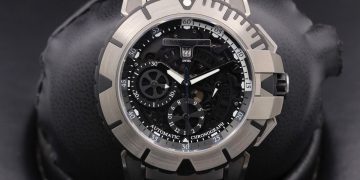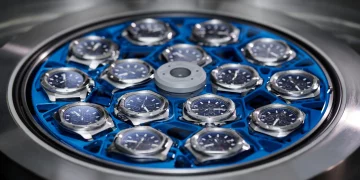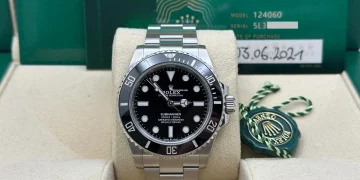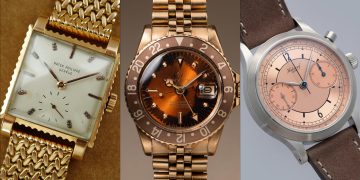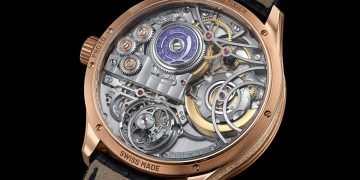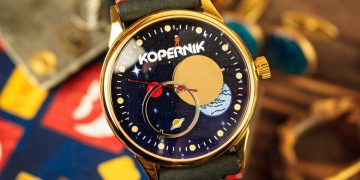Automatic watches are a marvel of horological engineering, powered by the movement of the wearer’s wrist, rather than by a battery. They utilize a mechanism called the rotor, which winds the mainspring as the watch is worn. Over time, this energy is released, driving the hands of the watch to keep time. However, while automatic watches are designed to be self-winding, the question remains: Do automatic watches need regular winding, even if they are not being worn regularly?
In this article, we will delve into how automatic watches work, whether they need to be regularly wound, and the potential impact on their long-term functionality and accuracy.
1. Understanding How Automatic Watches Work
An automatic watch, also known as a self-winding watch, derives its power from the natural movement of the wearer’s wrist. The rotor, a small semi-circular piece of metal inside the movement, moves as the wrist is turned. This motion winds the mainspring, storing energy that powers the watch. The more the watch is worn, the more the mainspring is wound, ensuring the watch continues to run.
This self-winding mechanism is a key feature of automatic watches, distinguishing them from manual-winding watches, which require the wearer to physically wind the crown to store energy in the mainspring. However, automatic watches are not completely “self-sufficient,” as they rely on the regular movement of the wrist to keep them powered.
2. Do Automatic Watches Need to Be Wound Regularly?
The simple answer is: It depends. For most automatic watches, if worn regularly, they will remain powered, and no additional winding is necessary. However, there are situations where regular winding is beneficial or even required.
a. When the Watch Is Worn Regularly
If you wear your automatic watch daily, the natural motion of your wrist will wind the rotor, keeping the mainspring adequately wound and the watch running smoothly. As long as you wear the watch for several hours each day, it will remain powered, and no manual winding should be necessary.
Most automatic movements are designed to provide enough power reserve to last anywhere between 40 to 72 hours once fully wound. This means that if you wear the watch consistently, it should maintain its accuracy and timekeeping performance without any extra effort.
b. When the Watch Is Not Worn Regularly
If you don’t wear the watch for a few days or longer, it will stop running once the mainspring’s power reserve is depleted. Since automatic watches rely on wrist movement to keep wound, leaving the watch unworn for extended periods of time will result in a stopped movement.
In this case, it is highly recommended to manually wind the watch to jump-start the movement. Most automatic watches feature a crown that can be turned in a specific direction to wind the mainspring. By winding the watch a few times (usually around 30–40 turns of the crown), you will provide enough energy to start the watch running again.
c. Using a Watch Winder
For individuals who own multiple watches or prefer not to wind their automatic timepieces by hand every time they are taken off, a watch winder can be a convenient solution. A watch winder is a device that keeps your automatic watch ticking while it’s not being worn. It rotates the watch slowly, simulating the motion of the wrist, ensuring that the rotor remains in motion and the mainspring stays wound.
A watch winder is especially helpful for those who wear their automatic watches only occasionally or for complicated movements that may lose their calibration if left unwound for too long. For example, watches with perpetual calendars, moon phase indicators, or chronographs often require a continuous energy source to keep the calendar or other complications functioning accurately.
3. Impact of Not Winding Automatic Watches
While modern automatic watches are built with durability in mind, neglecting to wind or wear the watch for extended periods can have some consequences. However, they are generally not as severe as with mechanical watches that require manual winding.
a. Loss of Timekeeping Accuracy
If the automatic watch runs out of power, it will stop completely. After rewinding, the watch will need to be properly regulated to ensure it is keeping accurate time. Depending on the movement, this process can involve adjusting the hands or recalibrating the movement to restore optimal accuracy. While this doesn’t usually cause significant harm, not maintaining the power reserve may cause the watch to temporarily lose its timekeeping precision.
b. Potential for Over-Winding or Damage
Although rare, over-winding an automatic watch is a concern for some less-well-designed or older movements. Over-winding occurs when the mainspring is wound past its limit, potentially causing damage to the winding mechanism or other internal parts. However, modern automatic watches are designed with slip-clutches that prevent over-winding by disengaging the winding mechanism once the mainspring is fully wound.
c. Effect on Lubrication and Wear
Another aspect of regular winding is the distribution of lubricants inside the movement. As the watch runs, the lubricants in the movement are dispersed, ensuring smooth operation. If a watch is left unworn for a long period, these lubricants may settle, potentially leading to increased friction when the movement is finally wound again. While this is generally not a huge issue with regular winding, it is one reason why some watch owners prefer to wind their watches periodically—even when they aren’t wearing them.

4. Maintaining the Watch’s Condition with Regular Winding
To keep an automatic watch in the best possible condition, regular winding is important for both functional and aesthetic reasons:
a. Preventing Moisture Buildup
When a watch is left unworn for too long, the gaskets and seals inside the case can deteriorate, potentially allowing moisture to enter. Regular winding ensures that the seals stay in good working order, as the watch is continually being handled and checked.
b. Preserving the Movement’s Lubrication
As mentioned earlier, lubricants inside the movement play a critical role in reducing friction between moving parts. Periodically winding the watch helps keep the lubricants in motion, ensuring they remain effective over time and preventing excessive wear of the gears and pivots.
c. Prolonging the Lifespan of the Watch
By maintaining a consistent power reserve through regular winding, you prevent the watch from sitting unused for long periods, reducing the chances of the movement seizing up due to lack of movement. Additionally, the internal components remain in working order, ensuring the watch performs as intended for years to come.
5. When Should You Wind an Automatic Watch?
Here are some guidelines for winding your automatic watch:
- If the watch is running: If you are wearing the watch regularly, it should remain wound. If it stops, winding it manually should bring it back to life.
- If the watch has stopped: For watches that haven’t been worn for a few days, manually wind it around 30–40 turns of the crown to fully wind the mainspring.
- If you have a watch winder: If you use a watch winder, place the watch on it when not in use, and the rotor will keep it wound and ready to go.
- Avoid overwinding: Modern automatic watches typically have mechanisms to prevent overwinding, but it is always good practice to stop winding as soon as you feel resistance.
6. Conclusion
While automatic watches do not require regular winding as long as they are worn consistently, there are situations where winding them manually can be beneficial. For watches that are not worn regularly, winding them by hand or using a watch winder ensures that they remain functional, accurate, and properly lubricated. In addition, regular winding can help preserve the longevity of the movement, maintain the watch’s timekeeping accuracy, and protect the internal components from unnecessary wear.
Ultimately, whether or not you need to wind your automatic watch regularly depends on your wearing habits, but understanding how to care for it through manual winding or a watch winder can contribute to its optimal performance and longevity.



